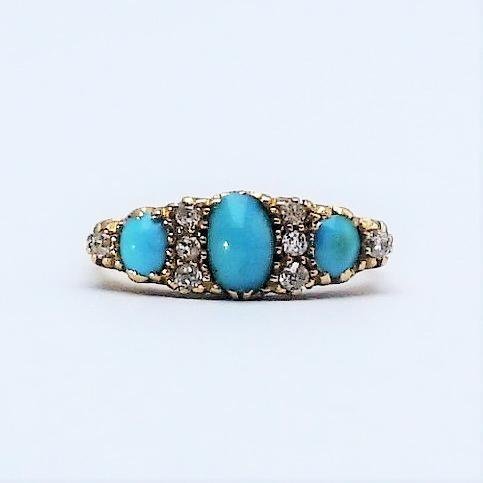Victorian Jewellery
The Victorian Era spanned Queen Victoria’s reign between 1837 and 1901. During those sixty-four years there were enormous changes in industry, society, fashion, and, of course, Victorian jewellery characteristics.
Historians often divide Britain’s longest reigning monarch into three parts: the Early Victorian or Romantic, the Middle Victorian or Grand, and the Late Victorian or Aesthetic periods.
In terms of jewellery, each sub-period had different motifs, gems, metals, and fabrication techniques that rose and fell in popularity.
The Romantic Period (1837-1860) reflected the love of a nation for its young queen and her love for her husband, Prince Albert. His death in 1861 marked the end of the Early Victorian Period and the beginning of the Grand Period.
Characteristics of Romantic Period Jewellery
During the Early Victorian period when the Industrial Revolution surged ahead Romantic Period jewellery was very sentimental. It often reflected the new love of a young couple. Jewellers frequently used 18 carat gold for their creations.
Brooches created during the Romantic Period had their pins extended past the body of the brooch. The fasteners had simple “C” design clasps.
Gemstones were often set in claw-like prongs or collet settings, metal that encircled the outer rim of the gemstone.
Romantic Period Jewellery Metal Work
Repoussé was a common metal working technique of the Early Victorian period. It involved hammering malleable metal into intricate designs and patterns.
Metals commonly used during this period include:
- 18 carat to 22 carat gold in all colours except white.
- Rolled gold (gold sheets soldered to base metal sheets).
- Gold electroplate (thinner sheets of gold fused to a base metal).
- Pinchbeck (83% copper and 17% zinc).
- Cut steel.
Motifs in Romantic Period Jewellery
Popular motifs included: eyes, hands, hearts, anchors, crosses, arrows, clovers, love knots, garters, buckles, vines, and leaves. Seed pearls were frequently arranged in grape clusters. Enamelling was also popular.
After Queen Victoria and Prince Albert purchased their Balmoral estate in Scotland, Scottish designs also became prevalent in jewellery. Prince Albert’s engagement ring to Queen Victoria featured a serpent with an emerald set in its head. As symbols of eternal love, snakes became very popular motifs in Early Victorian jewellery.
Popular Gemstones and Cutting Styles in Romantic Period Jewellery
Jewellers used a wide variety of gem stones during this period. Among the most popular: agate, amber, amethyst, chalcedony, chrysoberyl, diamond, emerald, garnet, malachite, seed pearls, quartz, topaz, and turquoise. Other materials frequently found in Romantic Period jewellery include ivory, lava stone, and tortoiseshell. Coral was also prized as a jewellery material with the redder coral being more expensive.
Gem cutting styles included:
- Rose Cut: round shape with a domed top and a flat bottom.
- Old Mine Cut: rounded square shape with many facets. Closely resembles today’s modern round brilliant
- Cabouchon: rounded top and flat bottom.
Acrostic Jewellery
Gemstones were arranged in settings so that the first letter of each gem spelled out an endearing word.
For example, a ring containing a ruby, emerald, garnet, amethyst, ruby, and diamond would spell ‘REGARD’. Pieces like this exemplify the sentimentality of Romantic Period jewellery.
Cameos
This ancient jewellery technique had a resurgence of popularity during Early Victorian times. Jewellers made these from coral, shell, and lava stone.





